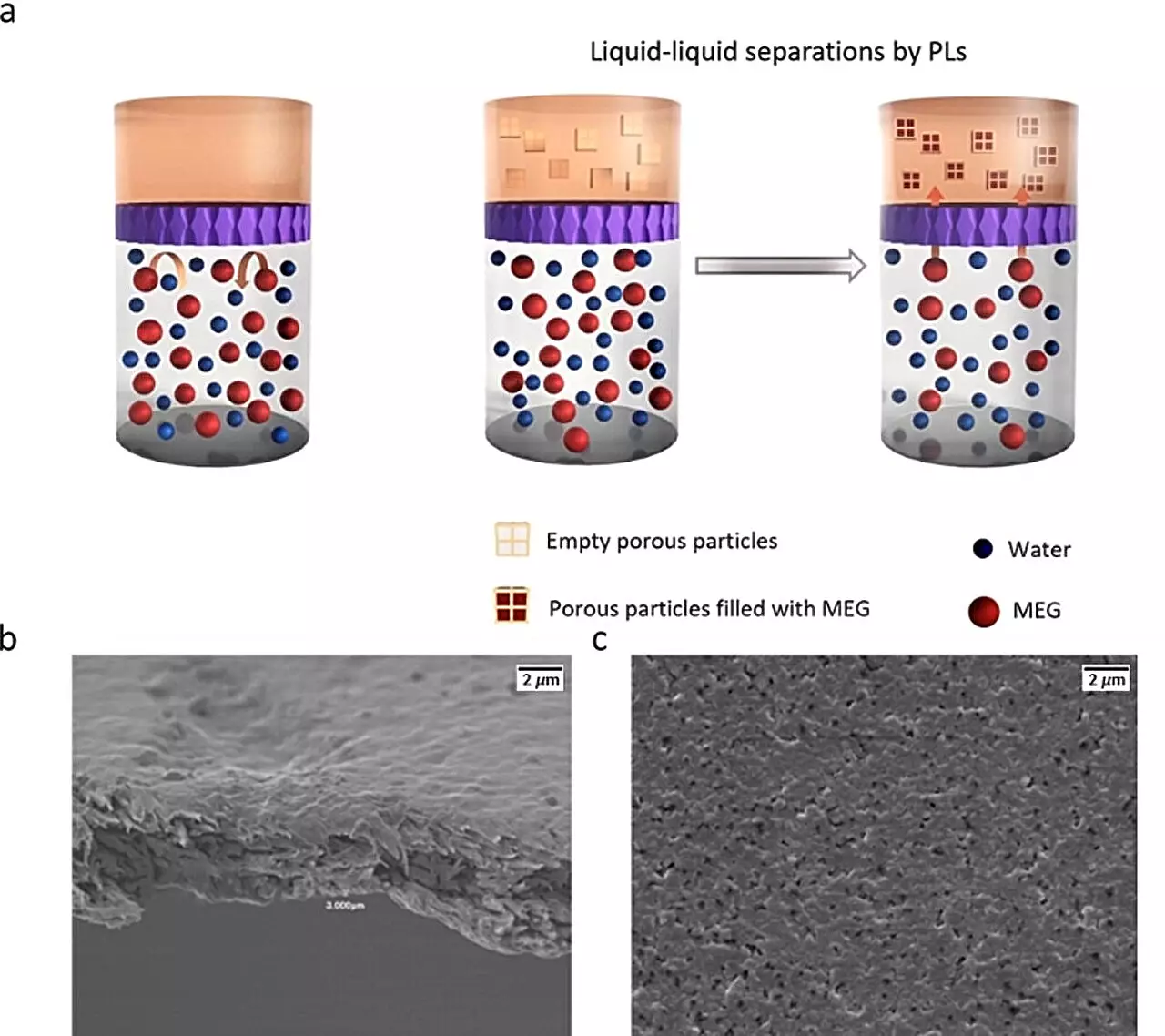In a remarkable scientific advancement, researchers from the University of Birmingham and Queen’s University Belfast have unveiled the potential of porous liquids (PLs) in achieving efficient liquid-liquid separations. This groundbreaking discovery not only has the potential to revolutionize environmental sustainability but also opens new avenues for enhancing public health. The study featured in Angewandte Chemie International Edition highlights how PLs, characterized by their intrinsic cavities, can effectively isolate harmful substances from water, presenting significant implications for both industrial applications and consumer products.
The impetus for this research arose from the environmental concerns associated with the widespread use of monoethylene glycol (MEG) in the aeronautical sector. MEG is a crucial component in de-icing operations but poses severe ecological risks due to harmful runoff contaminating water bodies. Traditional disposal methods fail to effectively mitigate these risks, leading to the accumulation of MEG-water mixtures in large tanks at airports, which come with their own environmental liabilities. The innovative use of Type 3 PLs in this research demonstrates a practical solution, achieving up to 88% absorption of MEG while leaving the water uncontaminated.
Beyond addressing ecological issues in aviation, the study sets a remarkable precedent for potential applications in various industries. One particularly intriguing exploration involved the use of a non-toxic, pH-resistant PL to reduce alcohol content in beverages such as wine and gin. This opens up the possibility of producing low-alcohol variations of popular drinks, maintaining flavor integrity while moderating alcohol consumption levels. Unlike current low-alcohol brands, which often compromise taste for reduced alcohol content, this method could revolutionize the beverage industry, catering to the increasing demand for healthier drinking options.
The ability of porous liquids to perform liquid-liquid extraction marks a significant expansion in the functional scope of PLs. This advancement transitions the understanding of these liquids from mere theoretical concepts to practical tools for solving real-world problems. Assistant Professor Deborah Crawford emphasizes the exploratory nature of the research, collaborating directly with industry stakeholders by visiting airports and assessing the challenges posed by MEG contamination. Such pragmatic approaches reflect the study’s commitment to not just academic inquiry but tangible environmental solutions.
Looking ahead, the successful application of porous liquids in liquid-liquid extraction not only fuels scientific curiosity but also aligns with societal shifts towards sustainability and health-conscious living. The potential of porous liquids extends far beyond the initial findings, inviting further research into their application across diverse sectors. As industries face increasing pressure to become environmentally sustainable, the innovative use of PLs could serve as a cornerstone for the development of safer, greener practices.
The use of porous liquids in liquid-liquid separation signifies a profound step forward in addressing environmental issues and advancing public health. This research not only reflects the ingenuity of modern science but also advocates for responsible innovation that resonates with contemporary societal values.


Leave a Reply